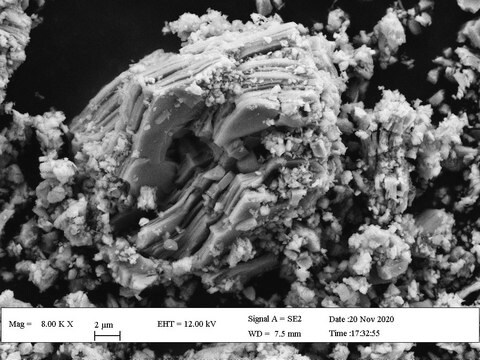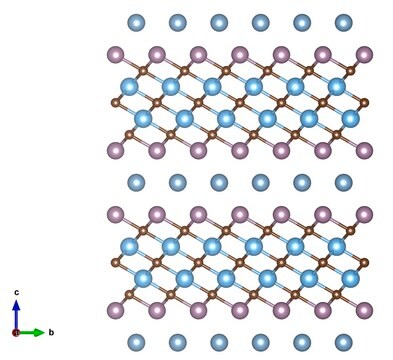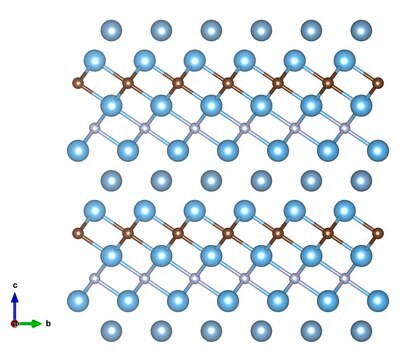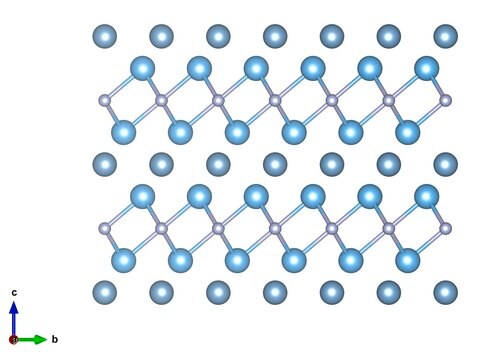About This Item
Recommended Products
Related Categories
Application
- Electrical Conductivity: Single-layer Nb4C3Tx flakes boast an electrical conductivity of 1,024 ± 165 S cm−1.
- Breakdown Current Density: ∼1.1 × 108 A.cm−2, comparable to Ti3C2Tx and graphene.
- Electrochemical Performance: Specific capacity increases from 116 to 320 mAh.g−1 after 1,000 cycles at 1 A current density.
- Interlayer Spacing: Accommodates ion intercalation/deintercalation without structural damage.
- Electrochemical sensing: Nb4C3Tx excels in electrochemical sensing, detecting dopamine at 23 nm due to its high conductivity and enhanced intercalation.
- Supercapacitors and Advanced batteries: Superior conductivity and charge-discharge rates for extended operation.
- HER Catalyst: Efficient hydrogen evolution reactions.
- ROS Scavengers: Biocompatible and photothermally stable for biomedical use.
Storage Class Code
11 - Combustible Solids
WGK
WGK 3
Flash Point(F)
Not applicable
Flash Point(C)
Not applicable
Choose from one of the most recent versions:
Certificates of Analysis (COA)
Sorry, we don't have COAs for this product available online at this time.
If you need assistance, please contact Customer Support.
Already Own This Product?
Find documentation for the products that you have recently purchased in the Document Library.
Articles
Professor Ebrahimi and Professor Robinson (Pennsylvania State University, USA) summarize recent advances in the synthesis of these 2D materials, resulting material properties, and related applications in biosensing of neurotransmitters, metabolites, proteins, nucleic acids, bacterial cells, and heavy metals.
Our team of scientists has experience in all areas of research including Life Science, Material Science, Chemical Synthesis, Chromatography, Analytical and many others.
Contact Technical Service








